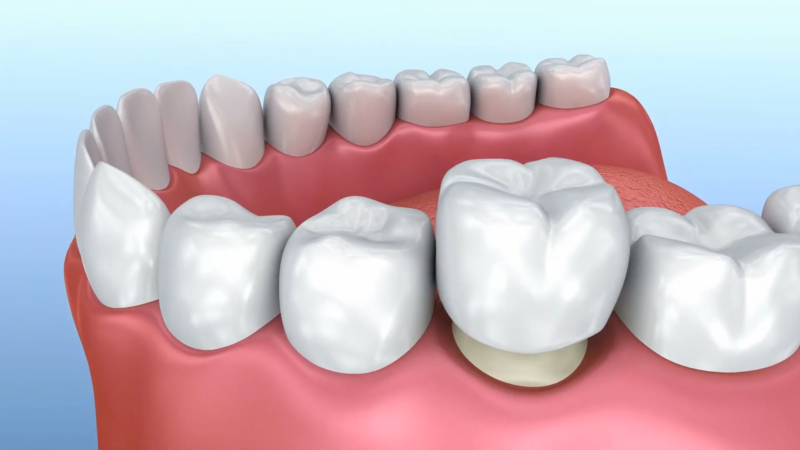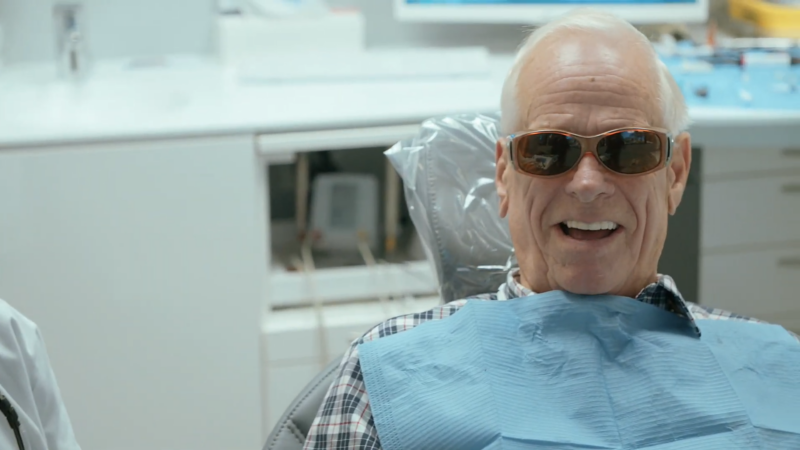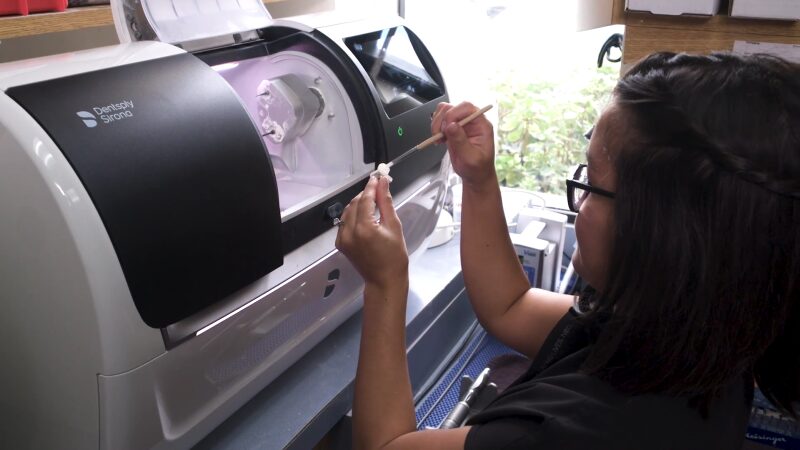CEREC crowns, or Chairside Economical Restoration of Esthetic Ceramics, represent a significant advancement in modern dentistry.
They offer a quick, efficient, and aesthetically pleasing solution for dental restoration. But do you know all the details relevant to this concept?
Let us talk about them in greater detail.
What Are CEREC Crowns?

CEREC crowns are a type of dental restoration made from durable ceramic materials.
Unlike traditional crowns, which may use metal, porcelain, or resin, CEREC crowns exclusively use ceramic, known for its strength and natural appearance.
The ceramic material mimics the look of natural teeth, providing a seamless and aesthetically pleasing result.
Traditional crowns often involve multiple materials and processes, including metal alloys for strength and porcelain for a natural look.
In contrast, CEREC crowns are crafted from a single block of ceramic, making them a more straightforward and efficient option. The primary advantage of CEREC crowns lies in their same-day service.
Traditional crowns require multiple visits to the dentist, but CEREC technology allows for the entire process to be completed in just one appointment.
The efficiency not only saves time but also reduces the need for temporary crowns, making the experience more comfortable and convenient for patients.
The CEREC Procedure

The process of getting a CEREC crown begins with an initial examination and preparation.
During this stage, the dentist assesses the condition of the tooth that needs restoration. It involves a thorough examination to determine the extent of decay or damage.
Once the assessment is complete, the dentist will prepare the tooth by removing any decay and shaping it to accommodate the new crown. Local anesthesia is typically administered to ensure the patient’s comfort during this process. Next comes the digital impressions phase.
Unlike traditional methods that use messy and uncomfortable molds, CEREC technology employs intraoral cameras to take precise digital impressions of the prepared tooth. These images are then used to create a detailed 3D model of the tooth, which is essential for designing the custom crown.
The digital nature of this step not only enhances accuracy but also significantly reduces discomfort for the patient. Following the digital impressions, the milling process begins. Using the 3D model, an in-office milling machine crafts the crown from a block of ceramic.
This step is remarkably time-efficient, with the milling process taking approximately 15 minutes per crown. The precise milling ensures that the crown fits perfectly, matching the exact specifications of the patient’s tooth.
Advantages of CEREC Crowns

CEREC crowns offer several notable advantages, making them a popular choice for dental restorations.
These advantages include:
- Time efficiency
- Accuracy and comfort
- Aesthetics and durability
| Advantage | Description |
|---|---|
| Time Efficiency | Completed in a single appointment, eliminating the need for temporary crowns and multiple visits. |
| Accuracy and Comfort | Uses digital impressions for a precise fit, avoiding discomfort from traditional impression materials. |
| Aesthetics and Durability | Made from high-quality ceramic, offering a natural appearance and high durability, withstanding chewing and biting forces. |
Comparing Traditional and CEREC Crowns
The process differences between traditional and CEREC crowns are significant.
Process Differences
The process differences between traditional and CEREC crowns are significant. Traditional crowns typically require multiple visits to the dentist.
The first visit involves taking impressions and preparing the tooth, followed by placing a temporary crown while the permanent crown is being made in a dental lab.
This process can take several weeks, depending on the dental lab’s workload and scheduling availability.
In contrast, CEREC crowns are completed in a single visit. The procedure begins with digital impressions taken using an intraoral camera, which creates a precise 3D model of the tooth.
This digital model is then used to design and mill the crown in-office using a CEREC milling machine. The entire process, from digital impressions to fitting the final crown, can be completed in a few hours.
Material Differences
Material differences also play a crucial role in the comparison between traditional and CEREC crowns.
Traditional crowns offer a variety of materials, including metal, porcelain, and porcelain-fused-to-metal. Each material has its advantages.
Metal crowns, for instance, are known for their strength and durability, making them ideal for molars that endure heavy chewing forces.
Porcelain crowns provide a natural appearance and are often used for front teeth.
Porcelain-fused-to-metal crowns combine the strength of metal with the aesthetics of porcelain, offering a versatile solution for various dental needs. CEREC crowns, on the other hand, are made exclusively from ceramic.
While ceramic is durable and aesthetically pleasing, it may not offer the same level of versatility as the range of materials available for traditional crowns.
Ceramic is highly resistant to wear and mimics the appearance of natural teeth, but it may not be as strong as metal or metal-fused options for areas requiring additional strength.
Use of Digital Technology

The use of digital technology in CEREC crowns offers enhanced accuracy and comfort compared to traditional methods.
Digital impressions create a precise 3D model of the tooth, ensuring a better fit for the crown.
The digital approach enhances the overall patient experience by providing a more accurate and efficient process.
However, the high initial cost of CEREC technology means that not all dental practices can offer this option.
The equipment and training required for CEREC technology represent a significant investment, which may not be feasible for all dental practices.
As a result, the availability of CEREC crowns can be limited, and patients might need to seek out specialized dental offices that offer this advanced technology.
Comfort and Convenience
The comfort and convenience offered by CEREC crowns are notable advantages.
The single-visit procedure reduces the number of dental appointments needed, which is particularly beneficial for patients with busy schedules.
The elimination of temporary crowns means that patients do not have to endure the discomfort and potential issues associated with temporary restorations.
In contrast, traditional crowns often require the patient to wear a temporary crown for several weeks while the permanent crown is being fabricated in a dental lab.
Temporary crowns can sometimes cause discomfort, and there is a risk of them becoming loose or falling out before the permanent crown is ready.
Availability and Cost

While CEREC crowns offer many benefits, their availability and cost can be limiting factors.
Not all dental practices have the necessary equipment and training to provide CEREC crowns, which means that patients may need to travel to find a dentist who offers this service.
The high cost of CEREC technology can result in higher prices for the crowns themselves, making them a more expensive option compared to traditional crowns.
Summary
CEREC crowns offer numerous benefits, including time efficiency, accuracy, and durability.
They provide a convenient same-day solution for dental restorations. However, limitations in material options and availability should be considered.
Similarly, when deciding between invisalign and traditional braces, it’s important to weigh the pros and cons of each option based on your specific dental needs and lifestyle.
Consulting with a dentist can help determine if these crowns are the best choice for your dental needs.

